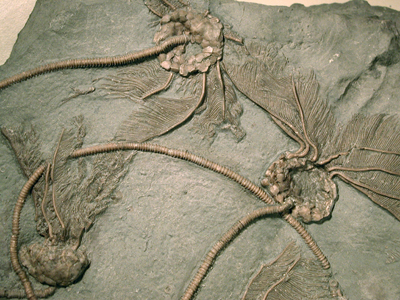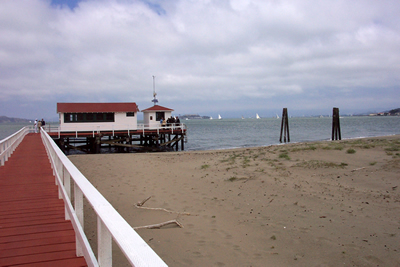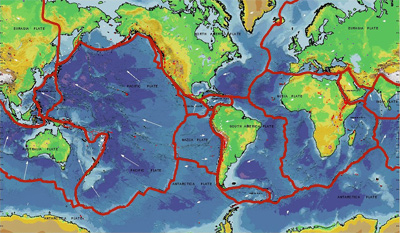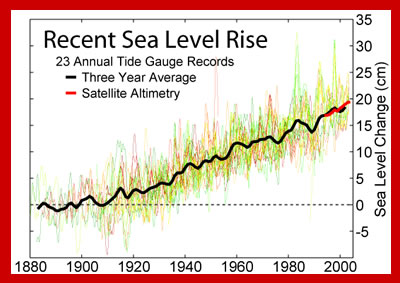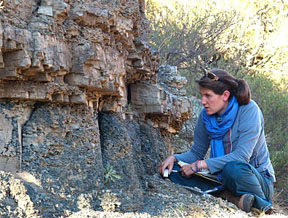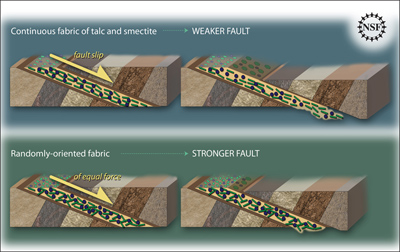Click on image for full size
Courtesy of Shanan Peters, University of Wisconsin-Madison
The Mystery of Mass Extinction is No Longer Murky
News story originally written on June 17, 2008
About 250 million years ago, almost all of the life in the sea became extinct – about 95% of species. This was during a huge mass extinction. Mass extinctions happen when the number of species decreases fast. Why do they happen? Scientists may have found the answer.
Over about the past half a billion years there have been five large mass extinctions. A new study suggests that changes in sea level over geologic time is the main reason that mass extinctions happen. Changes in ocean environments related to sea level have a big impact on living things that call those places home. As sea level changes, some animals and plants survive while others go extinct.
Over hundreds of millions of years, the world's oceans have grown and shrunk because of moving tectonic plates and because of climate change. There were times in the past when sea level was high and huge areas of the continents were flooded by shallow seas - the shark and mosasaur-infested sea that was in the middle of North America 100 million years ago, for example. When sea level fell and the water drained off the continent, the mosasaurs and giant sharks went extinct.
Sea level change may not be the only reason for mass extinctions. There can be other causes too - events like volcanic eruptions, killer asteroids, or disease. In the case of the extinction that killed off the dinosaurs 65 million years ago, for example, a huge impact crater suggests that the extinction might have been started when a giant asteroid crashed into Earth. Sea level change is, admittedly, much less dramatic than a crashing asteroid. It happens so slowly you can not watch it happen. But over geologic time it is a powerful force and it appears to be the cause of mass extinction events over much of Earth history.
Today, sea level is rising as climate warms. Given the link between sea level change and mass extinction, there may be a change in the species that live in the sea.


